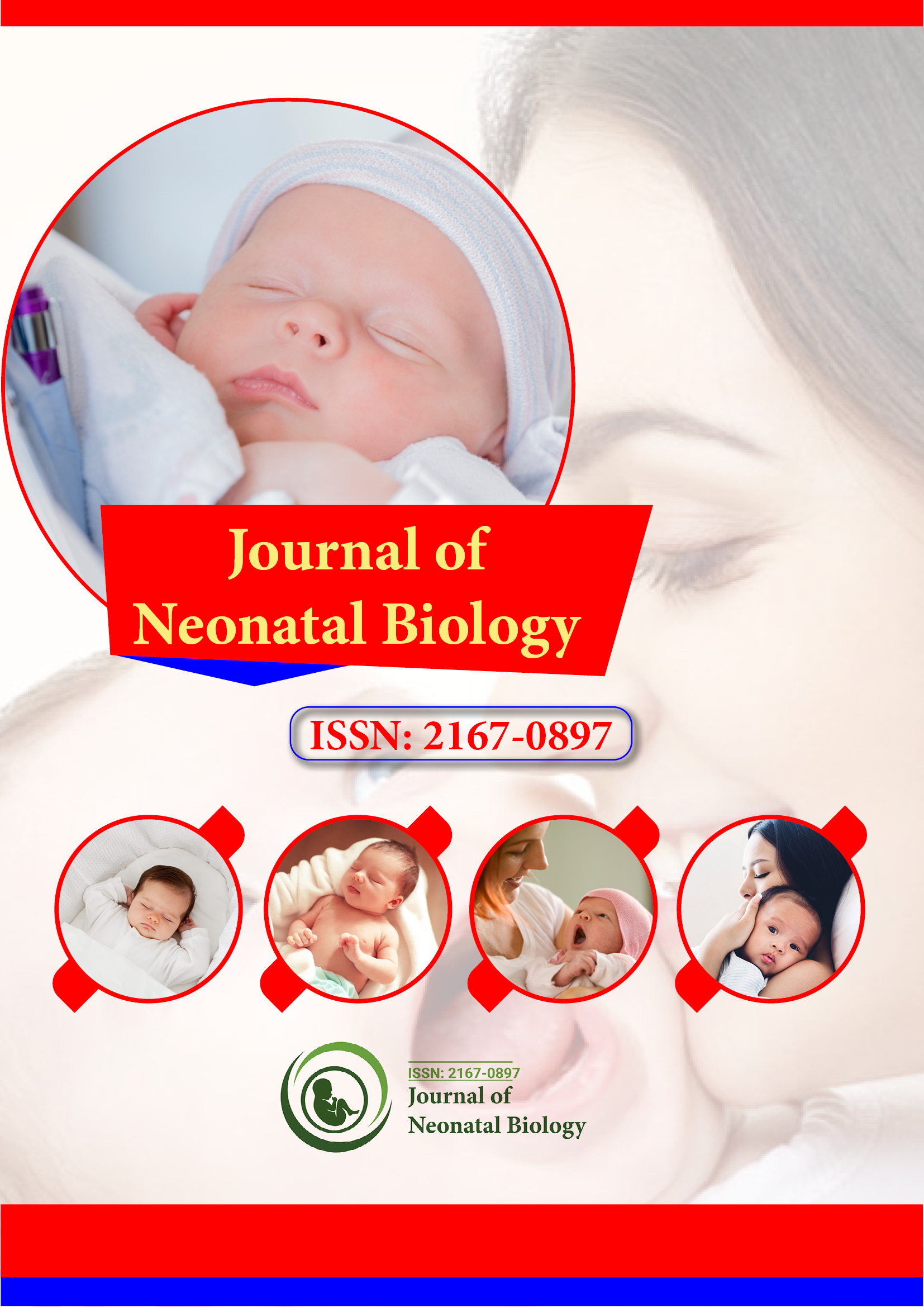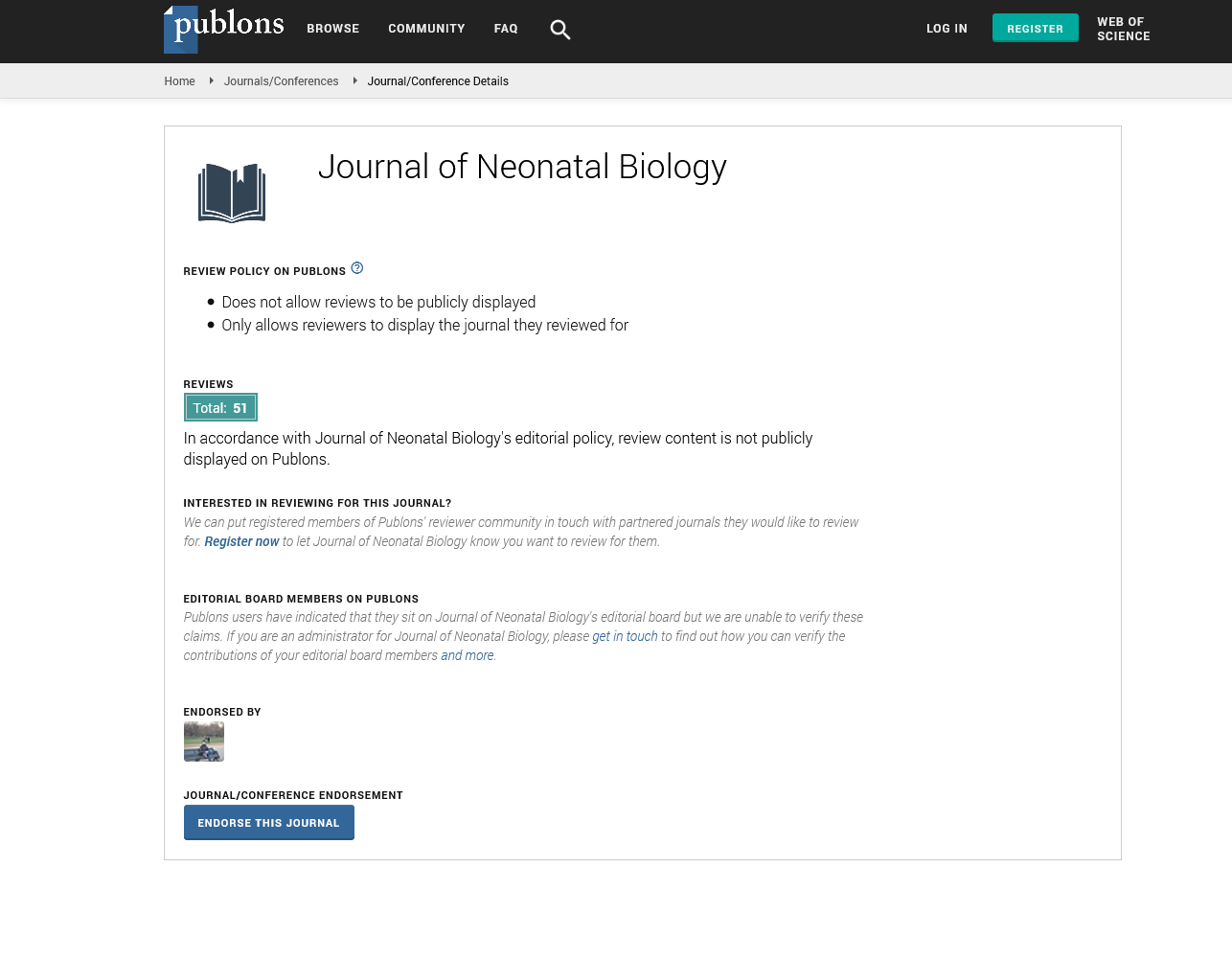Indexed In
- Genamics JournalSeek
- RefSeek
- Hamdard University
- EBSCO A-Z
- OCLC- WorldCat
- Publons
- Geneva Foundation for Medical Education and Research
- Euro Pub
- Google Scholar
Useful Links
Share This Page
Journal Flyer

Open Access Journals
- Agri and Aquaculture
- Biochemistry
- Bioinformatics & Systems Biology
- Business & Management
- Chemistry
- Clinical Sciences
- Engineering
- Food & Nutrition
- General Science
- Genetics & Molecular Biology
- Immunology & Microbiology
- Medical Sciences
- Neuroscience & Psychology
- Nursing & Health Care
- Pharmaceutical Sciences
Neonatal Abstinence Syndrome: Effectiveness of Targeted Umbilical Cord Drug Screening
International Conference and Expo on Neonatology & Perinatology - October 21, 2022 | Webinar
October 21, 2022 | Webinar
Alecia J. Karr
Division of Neonatology: United States, Columbus, Ohio
Scientific Tracks Abstracts: J Neonatal Biol
Abstract:
Background and Objectives: Determination of risk for NAS can be evaluated in a number of ways. Screening can be targeted, where testing is performed only if certain criteria are met, or screening can be universal, where all mothers or infants are tested. The objective of this study was to determine if targeted drug screening of newborns was effective in identifying infants at risk of NAS. Methods: This was a retrospective cross-sectional medical record review. Data was collected on all infants born between September 1st, 2015 and September 1st, 2016 who met criteria for drug screening based on targeted screening criteria (N=340). Sensitivity and specificity were used to evaluate each of the potential risk factors in terms of their ability to predict a positive drug test result. Two-sample t-tests were used to compare differences in average and highest Finnegan scores between babies with a positive drug test result and those with a negative test result. Results: The risk factor with the highest sensitivity was maternal history of drug use, with a sensitivity of 51.9 (specificity 72.7). The difference in the average Finnegan scores and highest Finnegan scores for those infants with a positive drug test result compared to those infants with a negative drug test result was statistically significant. Conclusions: The risk factors associated with this study were not sensitive. In order to be more efficient at scoring and monitoring infants with NAS, there must be a better process in place for identifying those that are at greatest risk. Importance Of Research: Neonatal Abstinence Syndrome (NAS) is a growing health problem in the United States. From 2004 to 2018, the incidence of NAS in the United States increased from 1.5 per 1000 hospital births to 6.8 per 1000 hospital births, a more than 350% increase.1,2 NAS is a condition in which an infant experiences withdrawal from uterine exposure to various substances such as oxycodone, heroin, buprenorphine, and morphine. Although most withdrawal assessment tools were developed for infant’s exposed to opioids, some researchers also consider non-opioid substance exposure when defining NAS. Depending on the severity of the symptoms, these infants may experience a longer hospital stay and may require treatment and monitoring in the neonatal intensive care unit (NICU), resulting in an increase in healthcare costs. NAS can lead to withdrawal symptoms within the first few days of life that include central nervous system (CNS) disturbances, vasomotor dysregulation, gastrointestinal disturbances, and hyperirritability such as tremors, fever, tachypnea, excoriation, diaphoresis, high-pitched crying, lack of sleep, vomiting, diarrhea, and more severe symptoms such as seizures and respiratory distress. Keywords: NAS, drug screening, substance use disorder, withdrawal
Biography :
Dr. Alecia Karr has a Doctorate in Nursing Practice (DNP) from the University of Kentucky. She is certified as an Acute Care Paediatric Nurse Practitioner and is licensed as an APRN in Ohio. She received her Bachelors of Science in Nursing from Arkansas State University and her Bachelors of Science in Psychology from the University of Louisville. She started her career at Nationwide Children’s Hospital in 2020, where she currently works in a level IV NICU and specializes in bronchopulmonary dysplasia (BPD). Prior to this position, Dr. Karr worked as a charge RN at a delivery centre in Elizabethtown.

